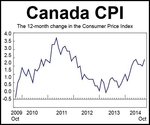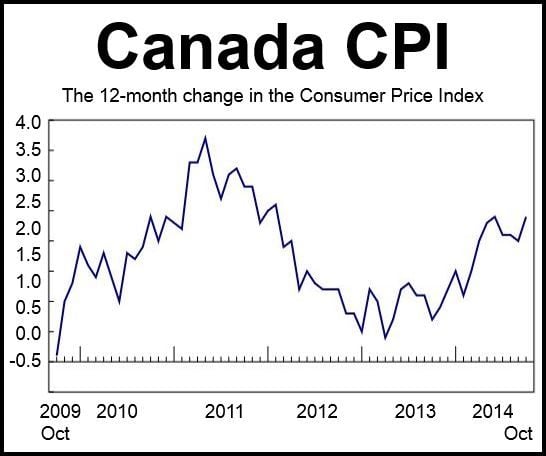Canada’s inflation rate surged to 2.4% annually in October from September’s 2%, partly driven by steep rises in shelter and food prices, Statistics Canada informed on Friday. Canada is the only rich nation whose inflation rate has exceeded its central bank’s target.
The latest figure will put pressure on the Bank of Canada to reconsider its stance of keeping interest rates low “for some time.” Even the core inflation rate, which factors out volatile items, increased to 2.3%. Central Banks watch the core inflation rate more closely.
Analysts say it is doubtful the central bank will do or reconsider anything with just one month’s worth of figures.
Apart from shelter and food, which rose by 2.8% each, there were also significant year-over-year price increases for clothing, footwear and transportation. Natural gas prices rose by 20.1% in October compared to the same month last year.
Canadians also paid more for electricity, homeowners’ home and mortgage insurance and rent. Property taxes were up by 2.2% compared to October last year, while mortgage interest cost fell by 0.2%.
October’s CPI (Consumer Price Index) was at the highest level since June, and came in higher than most economists’ predictions of 2.1%.
Source: Statistic Canada.
Inflation increased in all Canada’s provinces, with Alberta registering the steepest gain and British Columbia the smallest.
Consumer prices rose by 3% in Alberta, with natural gas jumping by 30.7%. In British Columbia, prices were 1.1% up on a year ago, with clothing falling but rising in the rest of the country.
Of the eight major components that make up the CPI, seven registered a seasonally adjusted increase in October.
Canada’s inflation rate is going in the opposite direction to the other advanced economies, especially the Eurozone, which has been moving further and further away from the European Central Bank’s target of 2%.


